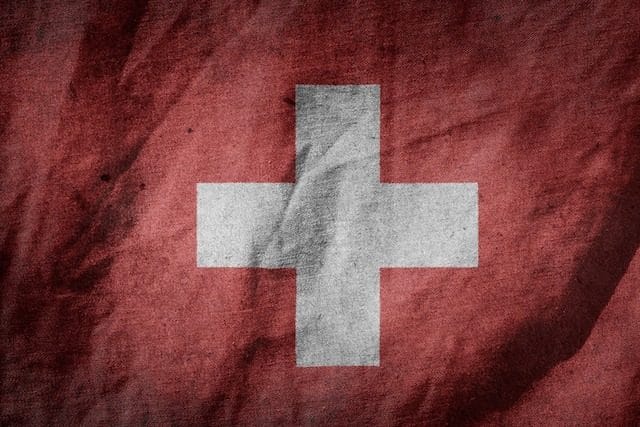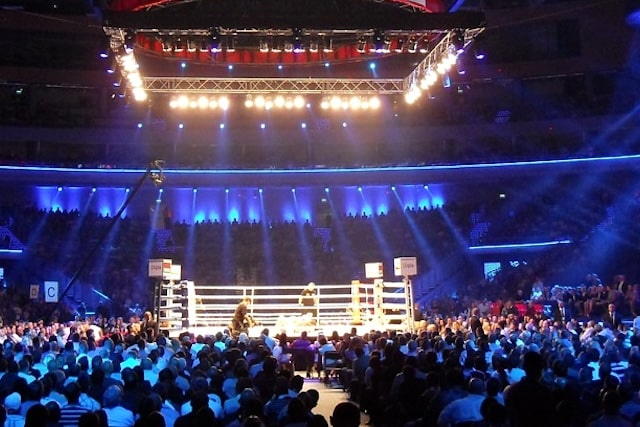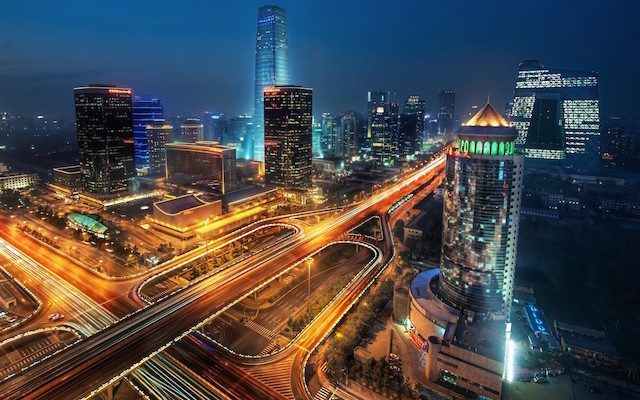Back in the 1950s and ’60s school children had to do duck and cover drills in the classroom so they would know what to do in the event of a nuclear war. Apparently, all you had to do was hide under your desk. Lucky for us in the Modern Age there are so many more things to worry about than boring old nuclear war, we don’t spend a lot of time worrying about bombs dropping or what we’re going to do if they come for us.
Even though nuclear war isn’t in most people’s top 10 stress-inducing cataclysms anymore, it’s still a possibility and the world is still full of nuclear bunkers that could maybe help us out if the sky starts falling. Because in the modern world, we’re so far removed from these bunkers, there’s probably a lot of them that you don’t know.
10. Switzerland Has Enough Shelters for More Than 100% of its Population

If you ever get inside info that a nuclear war is imminent, say it’s going to happen next Friday, you might want to take the time to get yourself to Switzerland before it happens. Switzerland is the only country in the world that has enough nuclear bunkers to safely house 100% of its population, probably with enough leftover room for you and your dog.
Every home in Switzerland is legally required to have a fallout shelter readily available. This includes apartment buildings which have to have accommodations for everyone who lives there. It’s been this way since 1963.
By the year 2006, there were over 300,000 shelters in Switzerland. They’re not just in private homes, either. If you get caught out shopping when the bombs drop, you might not have time to get back to your apartment. That’s why businesses, hospitals, and other establishments have their own bunkers and there are 5,100 public shelters as well.
If you’re curious about how America stands up, you’re going to be disappointed. While it’s believed that there are blast shelters for government officials, there is no public system to protect the citizens like there is in Switzerland. The US has not set up shelters in the event of nuclear war and, while there were some very rudimentary fallout shelter designations in the 1970s, those haven’t been funded in decades and mostly no longer exist.
9. There’s a Bunker Full of $2 Bills

Raven Rock is one of the United States’ most well-known nuclear bunkers. It’s a hollowed-out Mountain that dates back to the 1940s and during the Cold War, it was ready to house a good number of people in the event of a war.
When the Cold War ended, a lot of Raven Rock was scaled back and little was done with it until September 11, 2001. After that, Raven Rock was kicked into high gear again with expanded facilities and can now hold 5,000 people.
As mentioned previously, the US doesn’t have shelters like this for the average Joe on the street. A facility like Raven Rock would be reserved for people deemed important. Government officials, maybe doctors and engineers, and other folks who are considered important enough to want to preserve in the face of annihilation. Sadly, that isn’t most of us.
The future of America after nuclear annihilation has been very carefully planned. For instance, the IRS has a plan to continue taxing people even after the world has ended so the economy doesn’t die. They don’t have space for you, but they do have space for cash.
Part of this involves the Mount Pony facility in Virginia where they have stored $2 billion in cash, most of which is $2 bills. Do you remember $2 bills? Nobody liked them, so the government kept them and just put them in a mountain in case the world ended. The money is expected to last 18 months which is how long they feel would be needed to start printing new money.
8. The UK’s Burlington Bunker Was Basically a City
In the UK, if you were in the market for a big-time bunker you wanted the Burlington Bunker, located beneath Corsham, Wiltshire. The facility is buried 100 feet below the small town and covers 35 acres. It’s over a mile long but houses 60 miles of road inside. It even had a lake. It was basically a small town underground.
Once again, this massive facility wasn’t just for anyone, it was meant for government officials and other important types. It can hold 4,000 of them for three months. It has all kinds of amenities like a TV studio, laundry facilities, hospitals, cafeterias, and so on. Keep in mind, this was all built in the 1950s so the reality of it is all pretty grim.
The site used to be very top secret, but as with many of these relics of the ’50s, it was eventually decommissioned. In 2004 the site was essentially scrapped and put up for sale thanks to all the outdated technology and better options that exist.
7. The WWE Stores Old Footage in a Nuclear Bunker

Nuclear bunkers aren’t just for people, as we’ve seen. Heck, they don’t seem to be for most people at all, in fact. But they can be used as storage facilities for important items of historical significance. Like old WWE footage. They store some of that in a mountain.
The WWE owns not just its own footage but also all the footage of the smaller companies they bought out over the years including WCW, ECW, and more. And it’s not like they’re just posting that stuff for you to watch anywhere, but they keep it archived in a climate-controlled, hyper-secure secret vault operated by a robot.
The robot arms pluck tapes off of shelves, and there are over 4,000 of them. But that’s just where it’s being archived. There’s a library that holds nearly 50,000 tapes as well. But that’s just the regular facility in Connecticut.
The WWE has a secure, nuclear-proof mountain facility in the Catskills that houses another 60,000 assets. Their tapes date back in some cases as far as the 50s and they’re trying to digitize all of it before the physical tapes fall apart.
6. The Sonnenberg Tunnel Was the World’s Largest Civilian Bunker
It’s probably no surprise that the world’s largest civilian bunker is located in Switzerland. Known as the Sonnenberg Tunnel, it was opened in 1976 and is still there today though it’s not likely to be used any time soon. The tunnel heads under the Sonnenberg Mountain and has room for 20,000 people inside.
Living facilities were decked out with bunk beds and there was a prison inside as well as a hospital, command center, air filters in a room the side of a cathedral, and color-changing lights to let the residents, safe behind their five-foot thick, 350-ton doors know if it’s night or day outside.
Sonnenberg was built to withstand a one-megaton blast as close as half a mile, which would be 70 times more powerful than Hiroshima. It would take a staff of 700 to operate the facility. On the downside (aside from the nuclear war outside), water scarcity meant that none of those 20,000 people were getting regular showers. Most residents, aside from hospital patients, would have had to bring two weeks’ worth of food. The two weeks were because the bunker could only hold two weeks’ worth of water so everyone was hoping the end of the world wouldn’t last more than 14 days.
The facility has been downsized since its heyday but could still support 2,000 people today.
5. Super Rich People Have a Variety of Luxury Bunkers
It shouldn’t come as a surprise that rich people don’t want to die in a nuclear war. Because they’re rich, they have the luxury of being able to afford some swanky fallout shelters to try to save themselves. Many of them are already asking horrifying questions about how they can keep what’s theirs while the rest of us are left to bang on the walls outside as the world falls apart.
There have been stories in the media that reference all kinds of people in the tech and financial sectors who have built bunkers, taken over private islands, stockpiled ammunition and supplies, and are just waiting for the world to end. They get together to have dinners and discuss survival strategies. Some of them openly admit to stockpiling real estate both for passive income and to have a place to escape to, if they need it.
There are luxury apartments built in old Atlas missile silos that the rich can purchase if they want to have a more community-themed apocalypse – 12 full-floor luxury units for $3 million a piece. There’s food and fuel for five years but with hydroponic gardens, renewable energy, and tilapia farming it could last forever. It also has a sniper post in case the guards need to fend off attacks.
4. Romania’s Parliament Building Has a Bunker 8 Floors Down
If you’re not very familiar with Romania, you may not be aware of its remarkable Parliament building. Government buildings aren’t typically super interesting, but the Palace of the Parliament in Romania is the next-level structure. It’s the second largest administrative building in the world after the Pentagon.
The building is 3.9 million square feet, 275 feet tall, and ranks as the heaviest building in the world at a staggering 4.5 million tons. Former Romanian ruler Nikolae Ceausescu ordered the construction of the building in 1984 with plans for it to be finished by 1986. It’s still not done today. Of 1,100 planned rooms, only 400 were finished and are being used.
Among the many features of the building are the eight underground floors, the last of which is a nuclear bunker. Two bunkers were built because the builders messed up the location of the first one, so Ceausescu requested a second one. It was designed to withstand an earthquake that measured eight on the Richter Scale or two successive nuclear blasts. The five-foot-thick doors are radiation proof and there are eight escape tunnels.
3. A Canadian Built a Makeshift Bunker Out of 42 School Buses

Canadians are known for being polite but don’t for a second think they’re not also prepared, at least some of them. Take, for example, Bruce and Jean Beach who used 42 old school buses to build their own makeshift bunker not too far from Toronto.
The bunker, called Ark Two, is North America’s largest underground shelter and could theoretically have room for 500 people in its 10,000 square feet. It’s four meters, which is roughly 13 feet, below the ground and reinforced by concrete. The buses are arranged in intersecting blocks and have room for a makeshift hospital, daycare, kitchen, laundry, and living facilities.
The Beaches began building the structure in 1980 and have had to face the downside of over-preparedness as their food horde has suffered due to literal tons of it expiring as the years pass.
2. The UK Built Floating Bunkers in the ’60s and One Still Exists
In the UK, part of the official plan to protect the government and royal family in the event of nuclear war was to put them on floating bunkers, which you might know as boats, and then hide them around the coast of Scotland. These floating bunkers were partially in response to the fact that Britain feared the Soviets would know about their Burlington facility, making it useless for hiding any high-ranking officials.
While many of the ships were later scuttled, one remains in service today, though it’s been changed first to a car ferry and then to a cruise ship called the Hebridean Princess.
1. One Million Residents of Beijing Live Underground in Nuclear Bunkers

Though not as prolific as Switzerland, China spent a lot of time and money building underground bunkers for its residents as well. There are so many of them in Beijing, about 10,000, that, to this day, one million residents of Beijing live underground in these old bunkers.
Once the fear of the Cold War died down in the ’80s, the Chinese government decided they could make money by renting out the facilities to people who needed affordable, if somewhat uncomfortable housing. Some are 12 by 15 and others are just big enough for a single bed.
Even though the tiny bunker apartments are everywhere, they’re not easy to get to if you don’t already live there. A photographer who tried to document them in 2015 found that the entrances in many places are guarded by security who turn foreigners away.
The bunkers have poor ventilation which means that the air smells bad all the time. They also share communal spaces like kitchens and bathrooms. Sanitation is often lacking. But with rent between $40 and $100 per month in 2015, it was the best some people could afford.